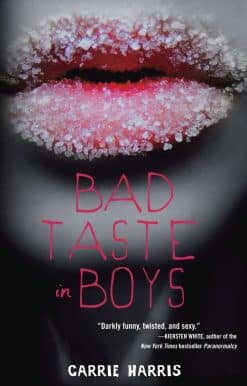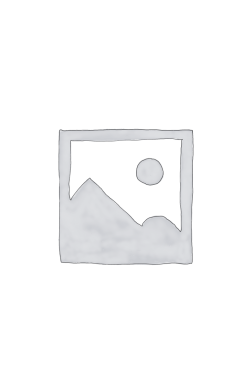Discovering Life’s Story: Biology’s Beginnings
18.00 JOD
Please allow 2 – 5 weeks for delivery of this item
Description
Trace the history of life science in the first of a four-part MITeen series by mega-best-selling author Joy Hakim, who brought us The History of US.When did we start learning the scientific secrets of life? Step back to the Islamic Golden Age, when scholars ask questions about life science and medicine that will establish those fields. Chart a path through the Renaissance, as Leonardo da Vinci dissects cadavers by candlelight to learn human anatomy firsthand. In this first of four volumes spanning hundreds of years of scientific innovation and discovery, follow the evolution of life science up to the late 1800s, when a baffled Dutch biologist finds a tiny infectious particle destroying tobacco crops and gives this particle a new name: virus. With Biology’s Beginnings: Discovering Life’s Story, best-selling author Joy Hakim begins a quartet of volumes mapping the path of human discovery as we unlock the biological secrets of our own existence. Richly illustrated with archival source materials and fine art, this STEM treasure trove features a wealth of back matter certain to kindle the appetite of science lovers.
Additional information
| Weight | 0.74 kg |
|---|---|
| Dimensions | 1.78 × 19.82 × 23.63 cm |
| PubliCanadation City/Country | USA |
| by | |
| Format | Hardback |
| Language | |
| Pages | 192 |
| Publisher | |
| Year Published | 2023-9-12 |
| Imprint | |
| For Ages | 9 |
| ISBN 10 | 1536222933 |
| About The Author | Joy Hakim is the best-selling author of A History of US, a ten-volume history of the United States, which has sold over three million copies, as well as of the much lauded The Story of Science series. Joy Hakim has worked as a teacher, newspaper writer, and editor, and lives in Maryland. |
In this well-researched, well-designed, and informatively written book, the fascinating story of life science as it was discovered throughout the ages is explored. . . . Written for teens, this book delivers an engaging and accessible history of life science. . . . Many photos, contemporaneous drawings, and portraits enhance the sparkling narrative. Thoroughly engrossing and highly recommended.—Kirkus Reviews (starred review)This fascinating first volume in the Discovering Life’s Story series is an enjoyable overview of the history of life sciences in the Western world. . . . The lively text is enhanced by historical maps, photos, portraits, drawings, artwork, sidebars and charts, and quotes by scientists or other notable people at the beginning of each chapter. Readers with an interest in the history of life sciences will find this engaging book to be richly rewarding.—Booklist (starred review)Nonfiction books for children about the natural sciences tend (naturally, we might say) to deal with particulars: the life cycle of the honeybee, say. In ‘Biology’s Beginnings,’ Joy Hakim takes a fresh approach. . . . Ms. Hakim, author of the series ‘A History of Us,’ ranges with brio and assurance across time and across the globe as she describes the push-and-pull of armies and microbes, of popes and stargazers, of philosophers and doctors and explorers in the long and erratic acquisition of knowledge. . . . Great quantities of illustration—maps and portraits and engravings—establish a swift visual pace for this engrossing chronicle for readers ages 12 and older.—The Wall Street JournalA work of nonfiction for adolescent readers that has the brio of an adventure story. . . In prose that is textured, humane and spirited, Ms. Hakim describes the movements of armies and microbes, the discoveries of anatomists and astronomers, the insights of philosophers and doctors and explorers. Abundant illustrations—maps, portraits, engravings—help keep the pace excitingly brisk.—The Wall Street JournalEye-catching photographs and illustrations supplement Hakim’s simple but engagingly fact-rich prose, making this an ideal introductory text for any budding naturalist, scientist or doctor.—The Washington PostProviding a readable and compelling overview of the history of life sciences, primarily in the Western World, this wonderfully written and exquisitely illustrated book . . . is the first volume in a planned four volume series. . . Every page of this fascinating book is adorned by sumptuous full-color reproductions of drawings, engravings, paintings, portraits, photographs and maps from history. . . Targeted to teens between 13 and 18 years old, adults will also find much in these pages to interest them. The author skillfully uses storytelling — narrative nonfiction — to teach her readers about the life sciences and the people who made these discoveries, placing these stories into their historical context, thereby drawing her readers into the story instead of keeping them at arms-length. . . This book, and the series, would make a great gift (the holidays are coming!) for a young person who is interested in the life sciences, and would be a welcome addition to a local library or classroom.—ForbesA curious teen, developing an interest in the sciences, will find Discovering Life’s Story: Volume 1, Biology’s Beginnings hard to resist. The text is engaging, and the illustrations are plentiful, attractive and directly tied to the text.—The Denton Record-Chronicle |
|
| Excerpt From Book | INTRODUCTIONThe Islamic World, the Christian World, and Some Foundational Life Science In this beginning, it is the eighth century, and things are happening in the new city of Baghdad, which will eventually become part of modern Iraq. The city straddles the Tigris River and is home to the Caliph al-Mansur, a Muslim ruler with big ideas: he intends to make Baghdad the center of a great empire. What is the caliph like? According to Karen Armstrong, a Catholic theologian known for her incisive books on religion, “Courtiers kissed the ground when they came into his presence in a way that would have been unimaginable in the days when Arabs prostrated themselves only before God.” Yakut al-Hamawi (1179–1229), a formerly enslaved Arab writer, describes Baghdad as two vast semicircles on the right and left banks of the Tigris, twelve miles in diameter. The numerous suburbs, covered with parks, gardens, villas, and beautiful promenades, and plentifully supplied with rich bazaars, and finely built mosques and baths, stretched for a considerable distance on both sides of the river. The Muslim empire is expanding across the Middle East and North Africa and on to Spain and Portugal. This will be known as Islam’s Golden Age. It will last from the eighth to the thirteenth century, bringing centers of learning to Cairo, Egypt; and Córdoba, Spain; as well as to Baghdad. About four thousand years earlier, the ancient city of Uruk, some 150 miles (240 kilometers) south of Baghdad, archived written materials, including the Epic of Gilgamesh, the heart-wrenching story of one of Uruk’s kings, in a temple library. Two very old cities, Nineveh and Babylon, also have renowned libraries. None hold paper books; rather, these libraries house inscribed clay tablets. One advantage of clay: if a library burns, some of the books will survive. In Egypt, in the city of Alexandria, a library founded in the third century BCE becomes known through much of the Eurasian world; writings there are kept on rolls of papyrus. Al-Hamawi, who spends ten years traveling in Persia, Syria, and Egypt, leaves notes on what he sees. Perhaps because he is a reader, he focuses on libraries and bookstores. This region, which will be known later as part of the Middle East, has a long tradition of supporting libraries. The best of the libraries are like universities: they attract brilliant minds. In Baghdad, thinkers are said to congregate at a fine library called the House of Wisdom. When the House of Wisdom is destroyed during the 1258 Mongol siege of Baghdad, many of its books are said to have been thrown into the Tigris River. Later, its role as a center of learning will be debated. Still, there is no doubt that ancient writings that might otherwise have been lost are preserved in the Muslim world’s libraries. This book centers on life science in the Western world. But knowledge doesn’t pay attention to boundaries—on land or in books. Scholars in the Islamic Golden Age ask questions about life science and medicine that help establish those fields. They preserve and study the writings of ancient Greece’s pioneering philosopher, Aristotle, and Rome’s remarkable Galen, a Greek-speaking physician. They add their own scholarship: Muhammad ibn Zakariya al-Razi, a doctor, differentiates smallpox from measles; he also pioneers the use of a control group in experiments. Abu Ali Sina, known in Europe as Avicenna, lives from 980 to 1037. He is one of the first doctors in the West credited with monitoring the heart’s rhythms by squeezing the wrist to feel a person’s pulse. A philosopher, astronomer, and poet as well as a doctor, he compiles a vast medical encyclopedia called the Canon of Medicine; it draws on the medical traditions of China and India as well as those from his own milieu and will be used for centuries in Europe (especially in Spain) and in the Islamic world. Things are different to the west. The great art, literature, and science of the Greek and Roman golden era, which began in the fifth century BCE, is hardly remembered. In Europe, the pursuit of the arts and higher learning has largely fallen by the wayside. To the north, seafaring Vikings are terrorizing settlements in the British Isles and on Europe’s Atlantic coast. In the eleventh century, when a university opens in Bologna, it is the first institution of its kind in Europe. Other universities in other cities soon follow. The universities are hungry for ideas to teach. Writings by Christians and Muslims soon flow back and forth from Islamic lands in the Middle East to Europe’s universities. Scholars in Islamic Spain and Sicily participate in an open society where writers and thinkers from Muslim, Christian, and Jewish backgrounds contribute ideas and share knowledge. At the new University of Paris, Thomas Aquinas, a Christian scholar who lives from 1225 to 1274, attempts to bring together his Christian faith and Aristotle’s ideas on science. More broadly, an entwining of Greco-Roman arts with Christian philosophy, Islamic scholarship, and the Hebrew Bible will provide a creative foundation for much that is to come in the Western world. In what may seem to us to be a technology-deprived era, ideas move slowly, but they do move.Aristotle and Plato: Different Ways to Consider Life ScienceFor the great Greek thinker Plato (427–347 BCE), people are imitations of an idealized, perfect human form, even if this perfect form is never visible to us. The same theory applies, in Plato’s view, to all animals and objects. A dog has its own idealized form; so does a banana. Plato’s brilliant student, Aristotle (384–322 BCE), rejects Plato’s idea. He closely observes life around him, particularly in a lagoon on the island of Lesbos, in the Aegean Sea. There he studies the differences between creatures such as dolphins and fish. He watches as a chicken embryo develops. His approach, blending theory with observation, lays foundations for what will be called the scientific method. Knowledge develops in fits and starts, and not always in tidy steps. The writings of both Plato and Aristotle are translated from ancient Greek and studied by writers in the Islamic world and then eventually become popular again in the European world. Plato inspires students to be creative and imaginative. Aristotle becomes a father of life science. |
| Series |
Only logged in customers who have purchased this product may leave a review.




Reviews
There are no reviews yet.